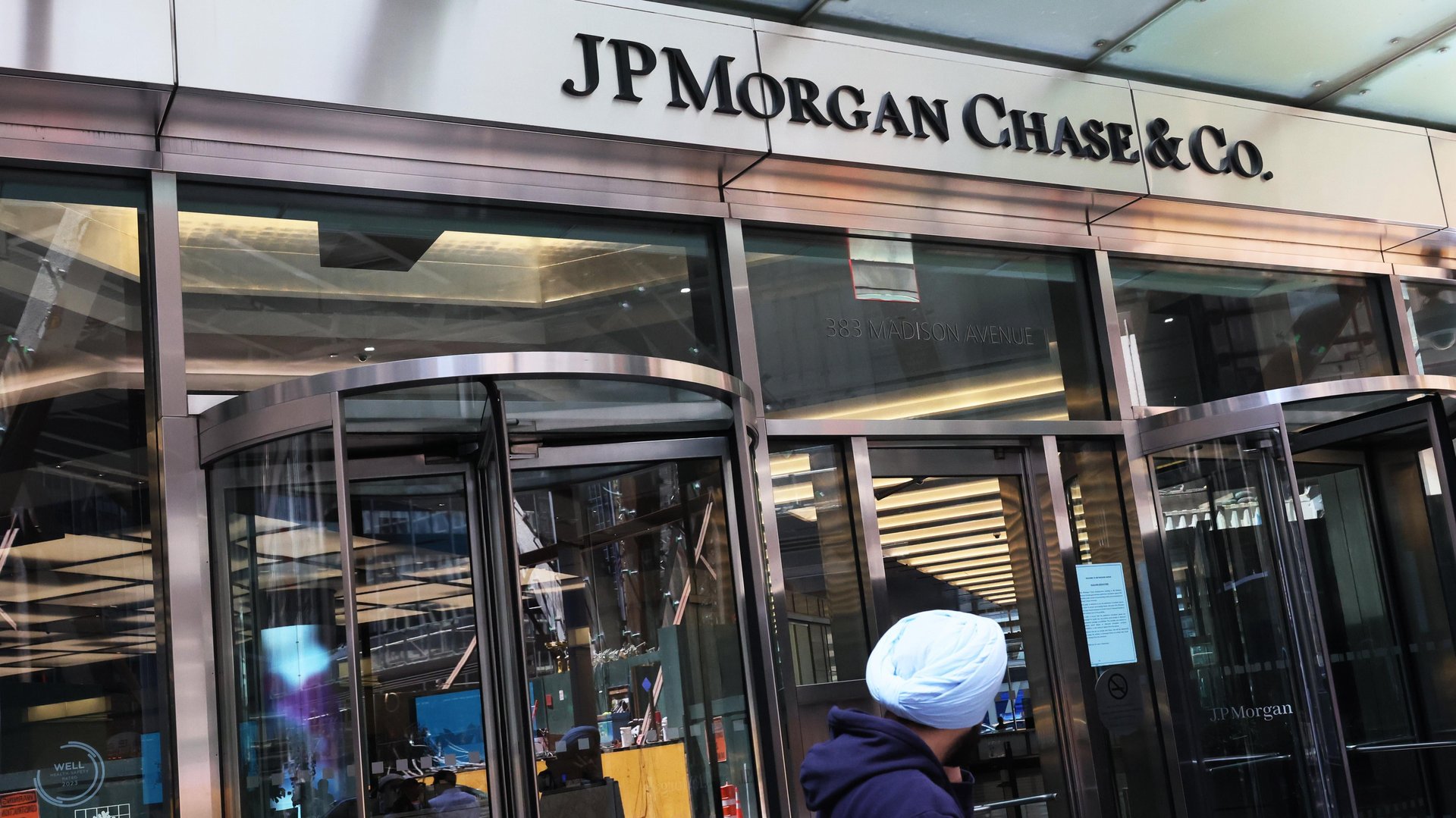US banks are bracing for losses on bad loans by filling their coffers
Ahead of their quarterly earnings reports, the six biggest US banks have kept aside $7.6 billion for bad loans

The largest US banks kick off their earnings season this week, starting with JPMorgan, Wells Fargo, Citigroup, and BlackRock on Friday (July 14), and their peers to follow the week after. And even though things may look calm on the surface, the financial seas are on the verge of getting rough.
Suggested Reading
Since 2020, loan defaults have been muted, partly thanks to pandemic-era stimulus cash and other government assistance that kept default rates low. But lenders are now starting to feel the ill-effects of higher interest rates and inflation on borrowers. Which is why US banks are putting aside more money than usual to deal with potentially bad loans.
Related Content
In general, banks with more exposure to rising interest rates are poised to fare better, while those reliant on investment banking, trading, and wealth management are being faced with a more challenging environment.
“For example, Wells Fargo boasts the highest net interest margin of the group and is therefore expected to experience the biggest boost from rising rates while also avoiding any drag from other activities due to its focus on traditional banking activities,” Joshua Warner, a market analyst, wrote for Forex. “JPMorgan and Bank of America will grow slower because they have lower margins and will see their earnings dragged down from their other activities.”
By the digits: US bank loan provisions
$5 billion: How much the country’s largest banks—JPMorgan Chase, Bank of America, Citigroup, Wells Fargo, Goldman Sachs, and Morgan Stanley—are estimated to have collectively written off, thanks to loan defaults in the second quarter of 2023, according to Bloomberg estimates. The sum is nearly double that from the same quarter last year.
$7.6 billion: How much the six biggest banks will set aside to cover loans that could go bad, according to analysts’ forecasts compiled by Bloomberg. This number has also doubled from the previous year.
$2.5 billion: How much the US’s largest bank, JPMorgan, is expected to put aside as default provisions in the second quarter—more than double from a year ago, and the fourth increase in a row.
$3.8 billion: JPMorgan’s likely sourced loan costs in the quarter ended June 30, up 120% from $1.8 billion in the same quarter a year ago—probably the biggest jump among all the big banks
$4.3 billion: How much the four biggest US lenders wrote off in bad consumer loans in the first three months of 2023, a 73% increase from the previous year
6%: The uptick in earnings per share, year-on-year, that bank analysts expect from the six largest US banks in their quarterly earnings
Quotable: JPMorgan’s first earnings after its rescue of First Republic
“JPM could surprise to the upside in terms of the revenue synergies from the [First Republic] deal. WFC [Wells Fargo] should benefit from less capital markets exposure, given expected weakness in these businesses in the quarter, as well as potentially better, idiosyncratic margin trends.”
—Richard Ramsden, managing director at Goldman Sachs, in a July 5 note
Calendar: Bank earnings
One more thing: A positive banks stress test
Regional banks have been in the midst of a crisis, but big banks are much better insulated. The Federal Reserve’s annual stress test to see how banks would perform in the event of an extreme downturn yielded positive results, with all 23 examined banks passing comfortably. The results came as welcome relief, given the recent spate of bank failures, from Silicon Valley Bank, Signature Bank, and First Republic in the US to Credit Suisse in Europe.
Bank of interest: Bank of America
While JPMorgan is on track to deliver the best results of the big six, Bank of America is expected to post the poorest. The bank’s stock, which took a big hit in March, is down 11% year-to-date, compared to an 11% increase in the S&P 500 index over the same period. At around 29%, it is trading 20% below its fair value estimate of $37 by Trefis.
Related stories
📜 US banks pull back on loans as Fed hikes rattle the financial sector
